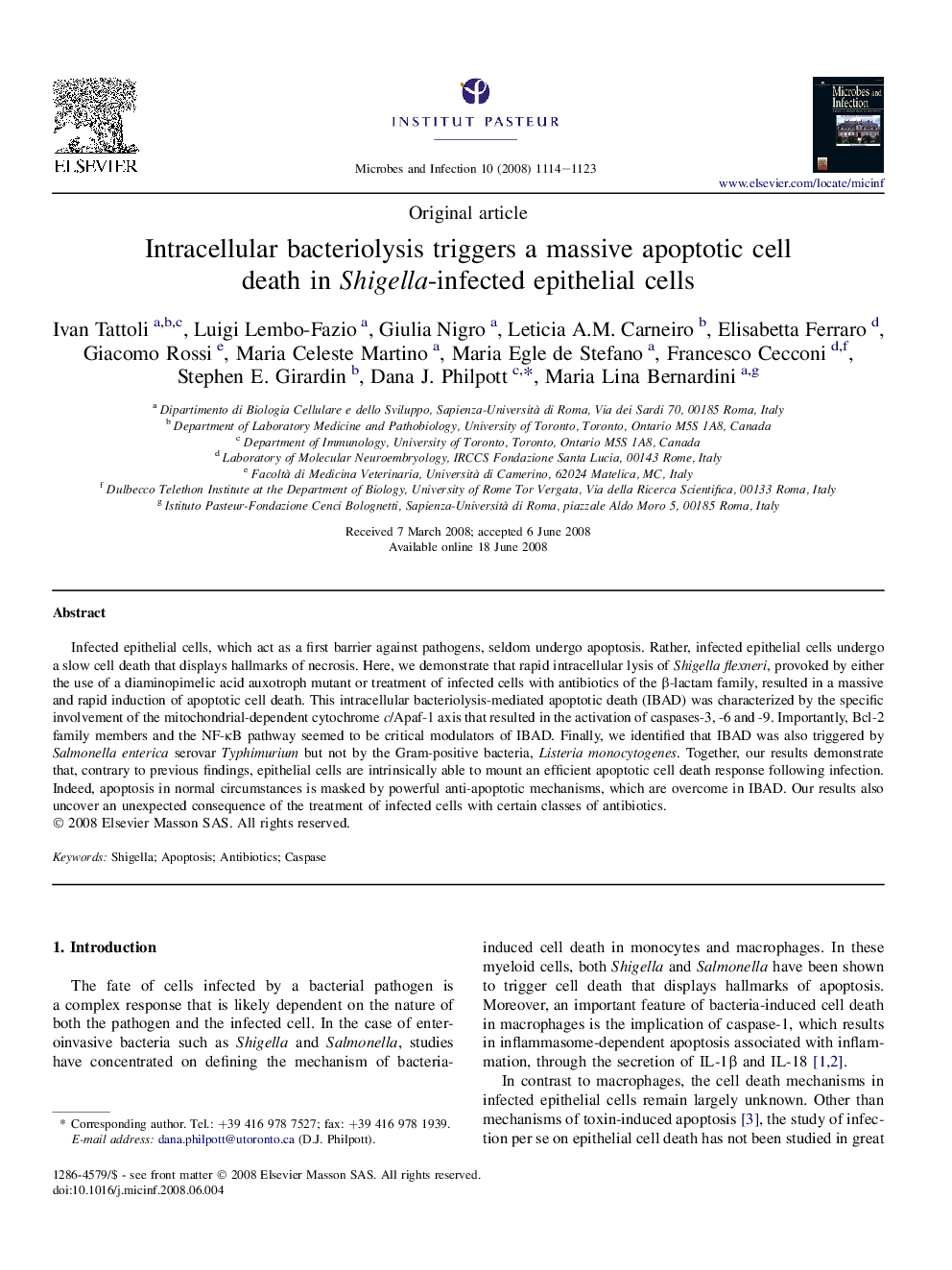| Article ID | Journal | Published Year | Pages | File Type |
|---|---|---|---|---|
| 3415672 | Microbes and Infection | 2008 | 10 Pages |
Abstract
Infected epithelial cells, which act as a first barrier against pathogens, seldom undergo apoptosis. Rather, infected epithelial cells undergo a slow cell death that displays hallmarks of necrosis. Here, we demonstrate that rapid intracellular lysis of Shigella flexneri, provoked by either the use of a diaminopimelic acid auxotroph mutant or treatment of infected cells with antibiotics of the β-lactam family, resulted in a massive and rapid induction of apoptotic cell death. This intracellular bacteriolysis-mediated apoptotic death (IBAD) was characterized by the specific involvement of the mitochondrial-dependent cytochrome c/Apaf-1 axis that resulted in the activation of caspases-3, -6 and -9. Importantly, Bcl-2 family members and the NF-κB pathway seemed to be critical modulators of IBAD. Finally, we identified that IBAD was also triggered by Salmonella enterica serovar Typhimurium but not by the Gram-positive bacteria, Listeria monocytogenes. Together, our results demonstrate that, contrary to previous findings, epithelial cells are intrinsically able to mount an efficient apoptotic cell death response following infection. Indeed, apoptosis in normal circumstances is masked by powerful anti-apoptotic mechanisms, which are overcome in IBAD. Our results also uncover an unexpected consequence of the treatment of infected cells with certain classes of antibiotics.
Keywords
Related Topics
Life Sciences
Immunology and Microbiology
Immunology
Authors
Ivan Tattoli, Luigi Lembo-Fazio, Giulia Nigro, Leticia A.M. Carneiro, Elisabetta Ferraro, Giacomo Rossi, Maria Celeste Martino, Maria Egle de Stefano, Francesco Cecconi, Stephen E. Girardin, Dana J. Philpott, Maria Lina Bernardini,
